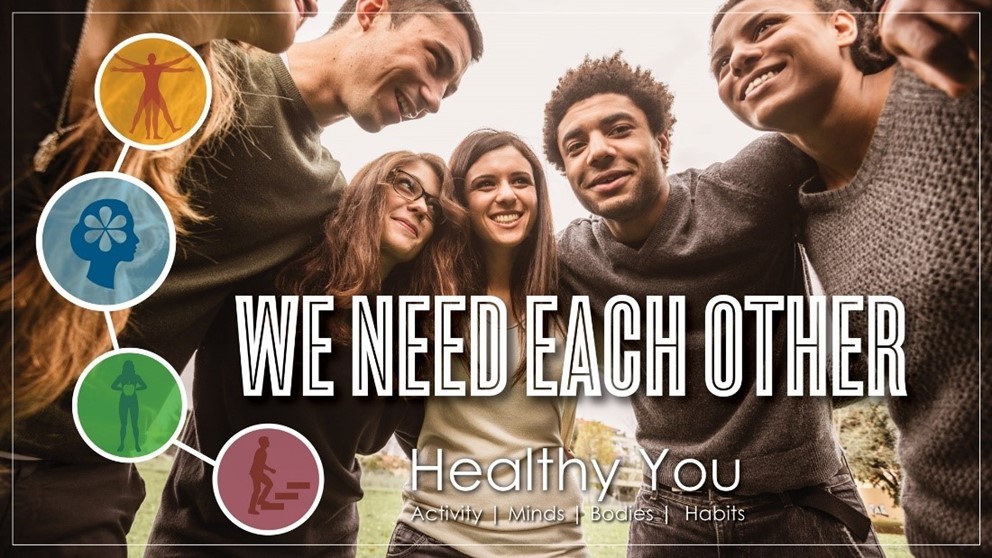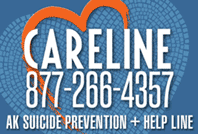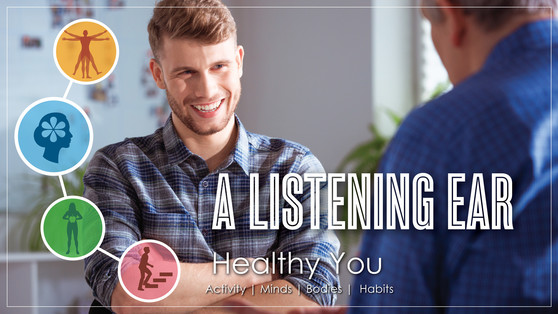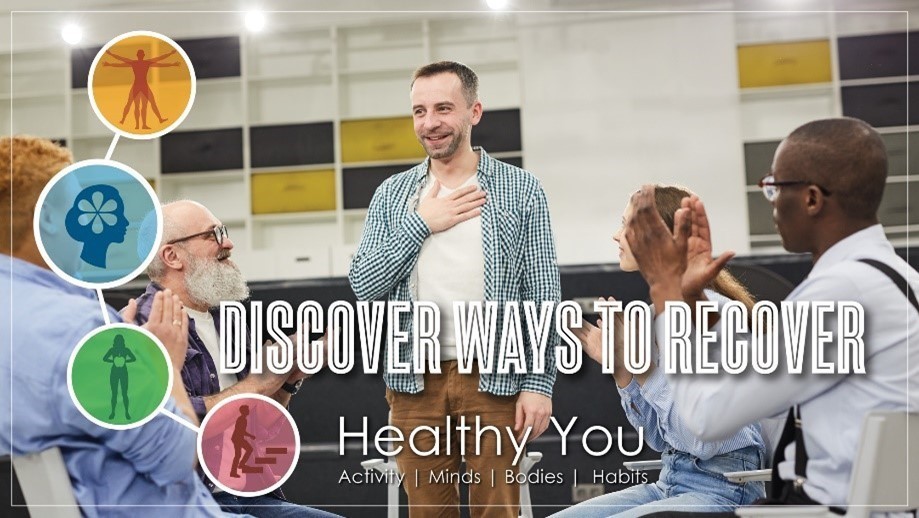We can all help prevent suicide
If you are considering harming yourself or you need to talk with someone confidentially and judgment-free, contact Careline Alaska anytime toll-free 1-877-266-4357 (HELP) or text 4help to 839863. Please consider putting that number on your refrigerator now and carrying it with you as well, not only for yourself but for others in your life who may need it.
In Alaska, many of us have experienced losing a loved one or someone we know to suicide, or we may struggle with thoughts of suicide ourselves. Suicide rates in our state continue to be among the highest in the nation. Talking more openly about suicide – and learning more about suicide prevention – is a proven way to help save lives.
In this blog update:

We all play a role in suicide prevention
The Alaska Department of Health and Social Services serves as a connector to resources that can help. One place to start is on our Healthy You Minds webpage, which contains a wide range of links and resources that someone you love may appreciate as they may not have the capacity to search these resources out on their own right now. There are other ways each of us can take actions to make a difference. For instance, when youth have three or more adults they can trust in their lives, they are less likely to consider suicide. Parents, extended relatives, teachers, coaches, neighbors, employers, spiritual leaders, employers and anyone else who has contact with youth can make a difference by reminding them that their presence in our schools, families, and communities matters. People of all ages need to know they are needed and necessary, and that their life has worth.
We can remind our loved ones – and ourselves– of this each day.
There are many myths surrounding suicide. Some people avoid talking about suicide because they fear it may put suicidal thoughts in someone’s head. Behavioral health experts say it’s better to talk about it and to be direct. If you are concerned about a friend or loved one, asking them if they are having thoughts of suicide can get them connected to help. Bringing up this topic may be difficult; for guidance and support you can visit this webpage about how to talk about suicide from the Indian Health Service or read this blog article from the National Alliance on Mental Illness (NAMI). There are many good resources on this topic to help guide you.
Another myth is that only people with known mental health issues consider suicide. This is not true, and, in fact, can be a dangerous assumption as many people are living with suicidal thoughts that others may not realize. Additionally, some people believe that if someone plans to kill themselves, they eventually will do so. The truth is that most people who attempt suicide survive. Nine out of ten, in fact. Furthermore, those survivors go on to live out the rest of their lives.
For more common suicide myths, visit this NAMI blog: 5 Common Myths About Suicide Debunked
The stronger the support networks we can build for individuals and communities, the more we can work upstream to identify issues before people reach a breaking point. Early intervention is as important as helping someone through a crisis or knowing what to do to support others if someone does take their life. Suicide prevention trainings can equip you and your organization with life-saving skills.
If you are interested in trainings on suicide prevention, here are a few places to start. You can contact either organization to learn about trainings specific to your needs:
Help reduce the possibility of someone you love considering suicide

A term that behavioral health specialists call protective factors refers to things that can build resilience and reduce the chances of people in our families and communities considering suicide. Protective factors can include receiving effective mental health care; feeling connected to individuals, families, communities, and social institutions; possessing problem-solving skills; and having contact with caregivers.
“We all can play a role in preventing suicide in Alaska,” said Leah Van Kirk, program coordinator of the Statewide Suicide Prevention Program within the Division of Behavioral Health. “Learning about risk factors and warning signs can help us recognize when to provide support and connect someone to the resources they need.”
Healthy Alaskans 2030, our state’s health improvement plan, has identified ways to increase protective factors for youth through two specific objectives out of 30 listed in the plan:
- Health Objective #17: Increase the percentage of adolescents (high school students in grades 9-12) with 3 or more adults (besides their parents) who they feel comfortable seeking help from
- Health Objective #18: Increase the percentage of adolescents (high school students in grades 9-12) who feel like they matter to people in their community
Achieving the goals of Healthy Alaskans relies on all Alaskans – the state, our co-partners, and especially you as front-line contacts and caregivers of our future leaders. You know the youth in your family and community best, and we encourage you to be part of our collective solution, as your capacity allows. Here are some ways you might help young Alaskans:
- Help youth find meaningful after-school activities and jobs
- Give them responsibilities at home, in school, and in community organizations that let them know they are necessary
- Sit down together for meals and listen when they share about their day
- Enjoy physical activity in nature together -- both movement and nature can help with mental health challenges
See our How I Move video series for some activities that Alaskans have found helpful during the pandemic. As we head into summer, there’s a whole range of additional activities that are now possible as well. Sometimes learning a new activity together, or even just sharing quiet time such as fishing together, can create a safe space for bonding.
Support a person who is considering suicide

According to the National Suicide Prevention Hotline, pay special attention if your loved ones exhibit any of these warning signs. Note that warning signs are associated with suicide but may not be what causes suicide. The more signs a person shows, the greater the risk:
- Talking about wanting to die
- Looking for a way to harm oneself
- Talking about feeling hopeless or having no purpose
- Talking about feeling trapped or in unbearable pain
- Talking about being a burden to others
- Increasing the use of alcohol or drugs
- Acting anxious, agitated or recklessly
- Sleeping too little or too much
- Withdrawing or feeling isolated
- Showing rage or talking about seeking revenge
- Displaying extreme mood swings
Some behavioral health specialists also recommend you check in on those among us who seem to have it together all the time, including high-performing students, as perfectionism is a pressure that can build up to a dangerous level.
If you suspect someone you love is considering suicide:
- Stay with them -- do not leave the person alone
- Remove any firearms, alcohol, drugs (including over-the-counter drugs) or sharp objects that could be used in a suicide attempt
- Take the person to an emergency room or seek help from a medical or mental health professional
- Call the Alaska Careline at 1-877-266-4357 or the U.S. National Suicide Prevention Lifeline at 800-273-TALK (8255)
Additionally, if you have the capacity to do so and the person is receptive, ask direct questions and listen to their answers; help them come up with a plan that includes ongoing professional support and community resources, and continue to assure them that you are there for them.
|
Get immediate help if you are considering suicide
In addition to the Alaska Careline phone and text numbers at the top of this blog post, one nationwide three-digit dialing code, 988 (which will connect you locally), will be even easier to remember and will become active July 16, 2022. You may also find the National Suicide Prevention Hotline’s website helpful as it offers a wide range of resources, including those for specific populations such as veterans of war, survivors of disaster or loss, those who identify as LGBTQ+, people who are Deaf and Hard of Hearing, and Alaska Native people.

“People are increasingly on edge. Although there are coping mechanisms that can help such as good nutrition, exercise, sleep, regular routines, and community connections, I think sometimes loved ones might underestimate how hard it is to do those things when someone is really hurting,” explained Jason Lessard, Executive Director of NAMI Anchorage (the local chapter of the National Association of Mental Illness). “Having someone to talk to, confidentially and without judgment, can be a lifeline.”

Share this post if you think it would be helpful to someone in your community. Tap into our mental health page on our Healthy You in 2022 website for quick links to a wide range of helpful resources. Follow us on Facebook, Twitter, and Instagram for tips and resources throughout the quarter as we continue our focus on mental health. And reach out to your friends and loved ones to both get and give support. We’re all feeling the strain right now -- and we can make it through this together. Support is in reach.
|